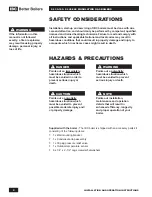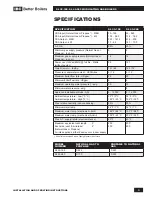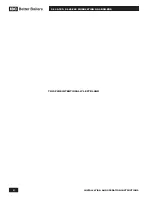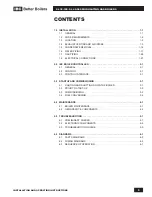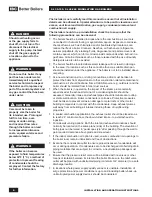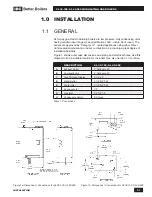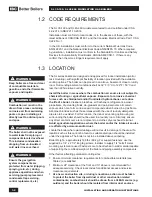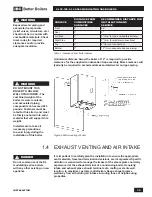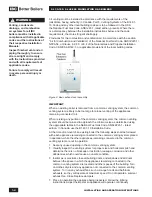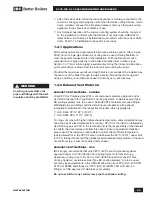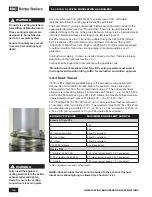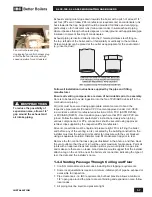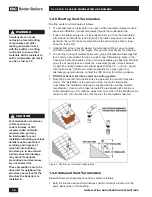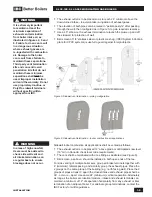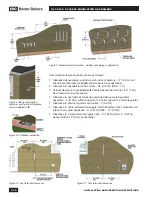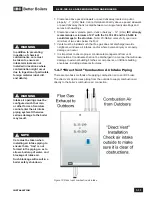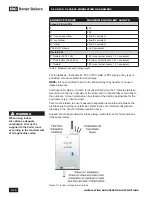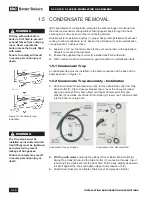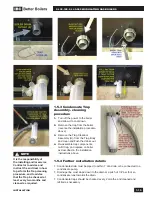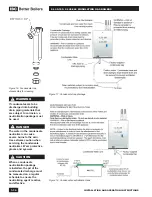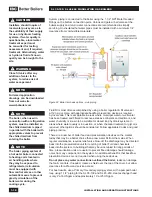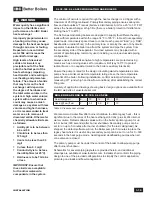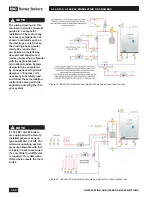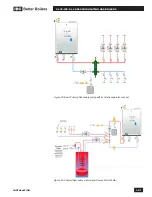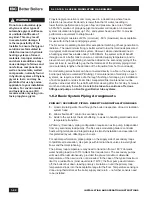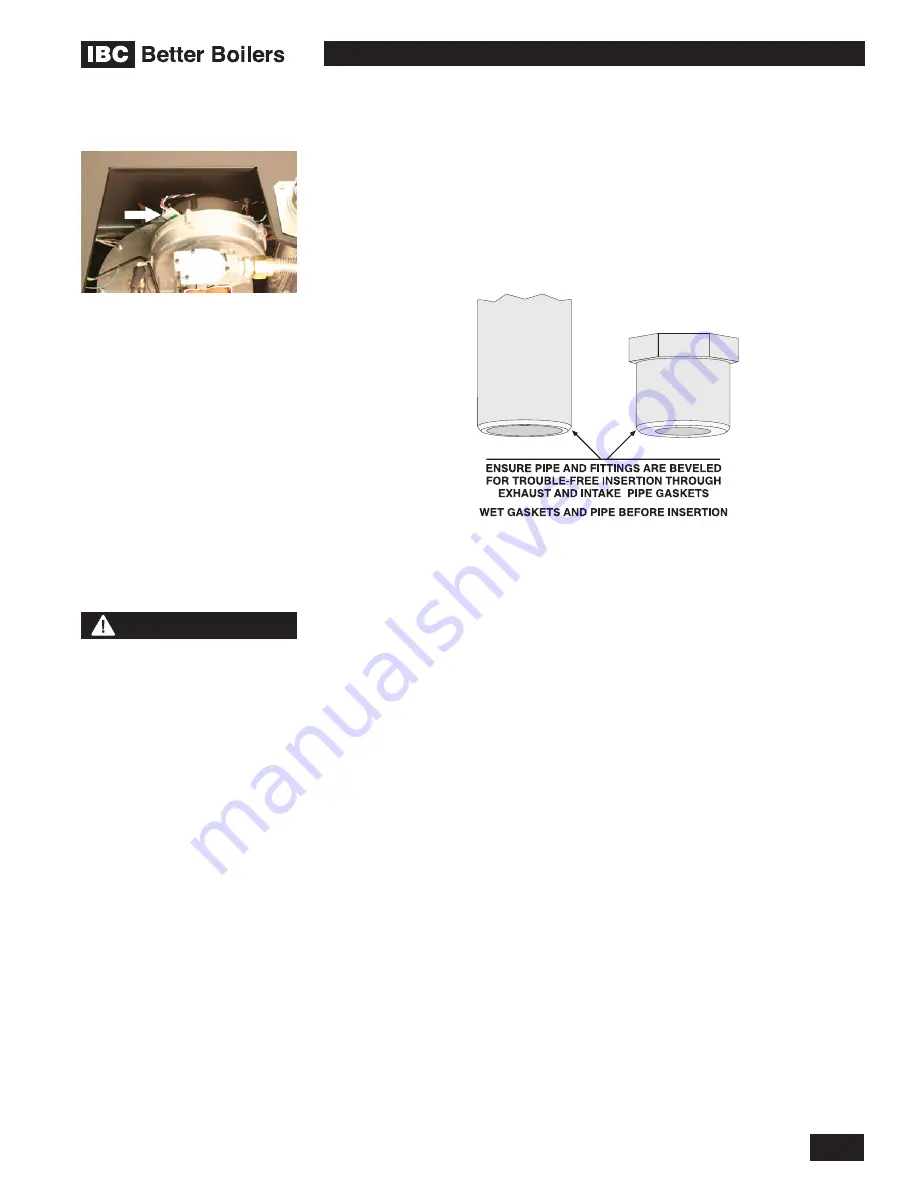
1-7
INSTALLATION
SL 35-199, SL 45-260 MODULATING GAS BOILERS
Exhaust venting must slope down towards the boiler with a pitch of at least 1/4”
per foot (PPs vent: follow PPs manufacturer requirements) so condensate runs
back towards the trap. Support should be provided for intake and vent piping,
particularly so for horizontal runs (follow local code). Insulate exhaust piping
where it passes through unheated spaces or underground, with appropriate pipe
insulation to prevent freezing of condensates.
Exhaust piping is inserted directly into the 3” female stainless steel fitting on
the top, left side of the boiler and run horizontally or vertically to the outdoors.
Screen material can be placed at the outlet as appropriate for the environment
(e.g. insects, dust).
Follow all installation instructions supplied by the pipe and fitting
manufacturer.
Ensure all venting components are clean of burrs/debris prior to assembly.
Care is to be taken to avoid ingestion into the fan of PVC/ABS debris left in the
combustion air piping.
All joints must be secured using appropriate solvent cement to bond the
respective pipe material (Canada: CPVC cement approved under
ULC-S636,
in accordance with its manufacturer instructions;
USA: PVC (ASTM D2564),
or PVC/ABS (D2235) - Use transition glue anywhere that PVC and CPVC are
joined. Follow the cement manufacturer’s instructions closely when joining
various components. For PPs, connections shall be secured using approved
retainer clips supplied by the respective PPs manufacturer.
All vent connections must be liquid and pressure tight. Prior to firing the boiler,
and before any of the venting run is concealed by the building construction, the
installer must test the exhaust joints under fan pressure with the vent blocked,
using a soap/water solution. Installer must fill condensate trap prior to test.
Remove the fan control harness plug as illustrated in the photos, and then block
the vent outlet so that the vent run will be under maximum fan pressure. Paint all
joints with an approved leak test solution just as you would joints in a gas line,
and make sure there are no leaks. Good practice would suggest that the installer
attach a tag on the vent line near the boiler vent connection indicating the type of
test, the date and the installer’s name.
1.4.4 Venting Passage Through Ceiling and Floor
•
Confirm material meets local codes including fire stopping requirements.
•
Some local jurisdictions require a minimum initial length of pipe be exposed or
accessible for inspection.
•
Pipe clearances - no IBC requirements, but best practice allows a minimum
1/4” open gap around the pipe to prevent binding and expansion noise; follow
local codes.
•
All piping must be liquid and pressure tight.
Fan control harness plug
Unplugging fan control harness plug
will drive the fan into manual high
speed operation for vent leak test
BEST PRACTICES
To reduce the possibility of
expansion noise, allow a 1/4”
gap around the exhaust and
air intake piping.
Summary of Contents for SL 35-199
Page 71: ...SERVICE RECORD DATE LICENSED CONTRACTOR DESCRIPTION OF WORK DONE...
Page 72: ...NOTES...
Page 73: ...NOTES...


